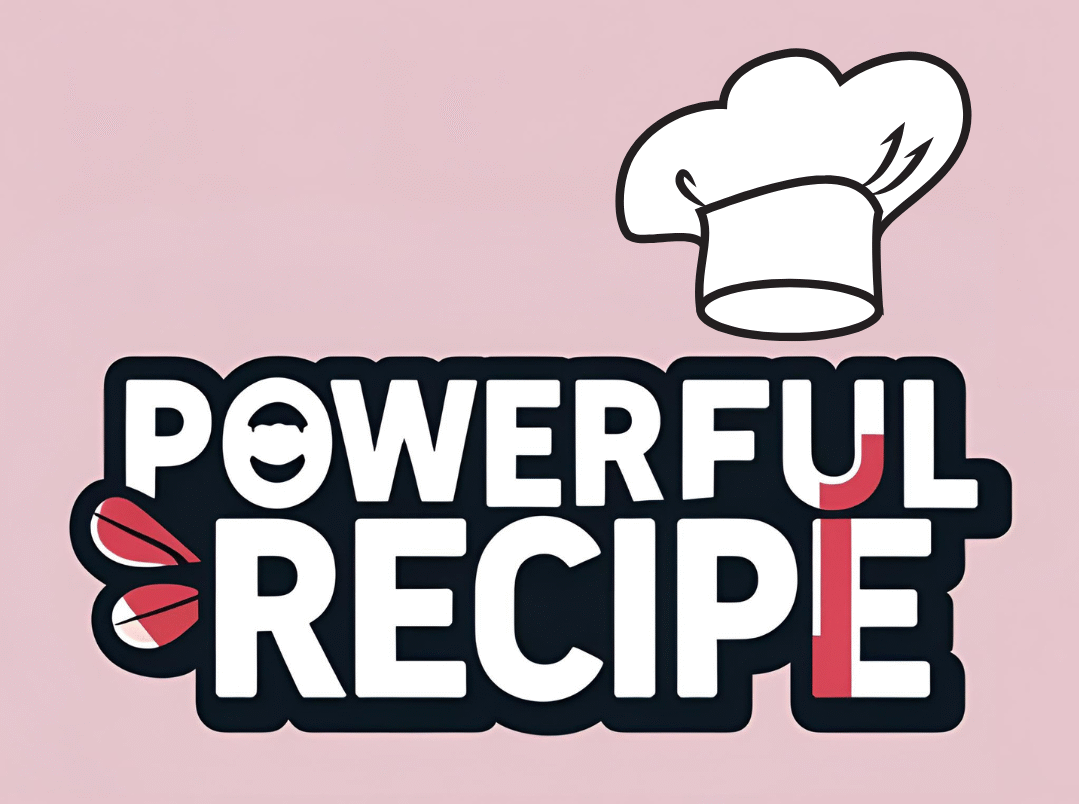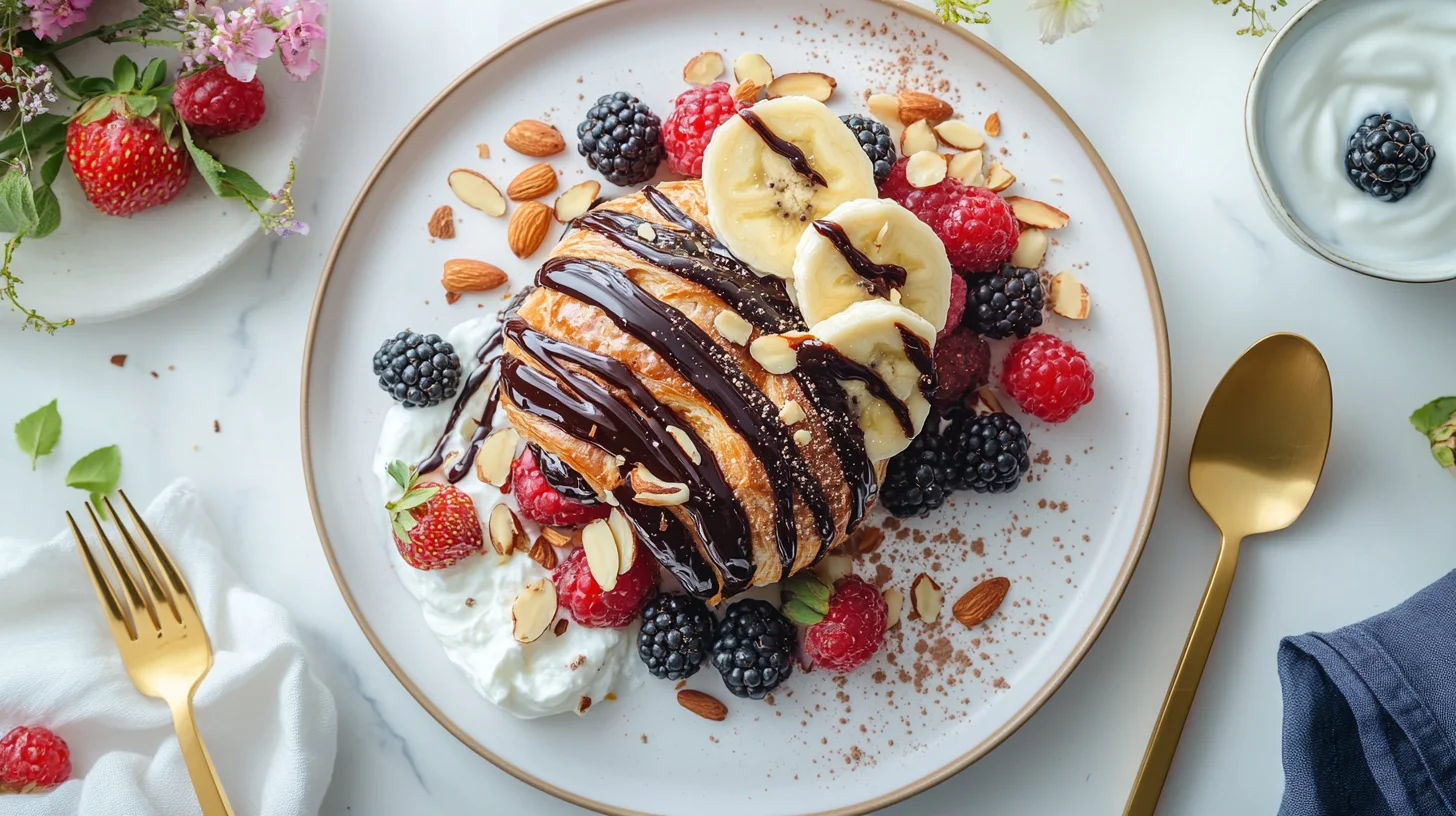There’s something undeniably magical about starting your day with a Chocolate Croissant Breakfast. That delicate crunch as your teeth sink into golden, buttery layers. The warm, soft center bursting with melted chocolate. The way it pairs so effortlessly with a hot cup of coffee or tea. It’s not just breakfast—it’s a small luxury, a joyful morning ritual that turns even the most ordinary day into something special.
Whether you grab it from your favorite bakery, warm it up at home, or bake it from scratch over the weekend, the Chocolate Croissant Breakfast (or pain au chocolat as it’s known in France) has become a beloved breakfast staple worldwide. It’s easy to see why: flaky on the outside, rich and gooey on the inside, and endlessly versatile. It’s the kind of food that satisfies a sweet craving while still feeling somewhat sophisticated.
In this article, we’ll dive deep into everything that makes the chocolate croissant breakfast such a hit. We’ll explore its delicious history, how it became a breakfast favorite, and what makes it so irresistible. You’ll also discover how to enjoy it in healthier ways, make it at home, or elevate it with side dishes and creative twists. By the end of this read, you’ll not only appreciate the art behind every croissant but might also be inspired to turn tomorrow morning into a flaky, chocolate-filled celebration.
So, whether you’re a curious foodie, a home baker, or someone who just loves indulging in a good breakfast, this guide is your ultimate flaky roadmap. Let’s unwrap the layers of this morning marvel and uncover why a chocolate croissant breakfast is more than just a meal—it’s a lifestyle.✨🥐🍫✨

The Origins of the Chocolate Croissant Breakfast
Understanding the origins of the Chocolate Croissant Breakfast gives us a deeper appreciation for this flaky breakfast favorite. While it’s easy to associate the chocolate croissant with France—and rightly so—the story goes far beyond French borders and is rooted in centuries of baking evolution.
The French Roots of the Chocolate Croissant Breakfast
Contrary to popular belief, the Chocolate Croissant Breakfast as we know it today didn’t actually originate in France. Instead, its earliest predecessor traces back to Austria. The kipferl, a crescent-shaped pastry, has been enjoyed in Central Europe since at least the 13th century. It was denser, less buttery, and not quite the same as today’s puffed-up pastry, but its shape and symbolic crescent design left a lasting legacy.
It wasn’t until the late 17th century, during the Ottoman sieges, that the kipferl began to morph into the French Chocolate Croissant Breakfast. According to legend, Viennese bakers created the shape to symbolize the defeat of the Ottoman Empire, whose flag featured a crescent moon. French royalty and nobility, enchanted by Viennese pastries, eventually brought the idea to France.
It was Marie Antoinette, an Austrian princess who became the Queen of France, who popularized these crescent-shaped pastries in the French court. Over time, French bakers began refining the recipe, adding more butter, and developing the lamination technique—folding butter into dough multiple times to create those iconic flaky layers.
From there, the croissant evolved into a cornerstone of French viennoiserie, the category of baked goods that bridge the gap between breads and pastries. This included croissants, brioche, and pain aux raisins—often enjoyed for Chocolate Croissant Breakfast or as a midday snack.
When Did Chocolate Enter the Picture?
The Chocolate Croissant Breakfast we know today is technically called pain au chocolat in French, meaning “bread with chocolate.” While similar in dough and texture to a croissant, pain au chocolat is typically rectangular in shape and contains two sticks of dark chocolate nestled inside its buttery folds.
The exact moment chocolate joined the party is hard to pinpoint, but most accounts suggest the introduction happened in the 19th century, likely in the Parisian bakery scene where experimentation was flourishing. Bakers began adding sweet fillings to laminated dough—almond cream, custard, fruit jams, and of course, chocolate. The rich, slightly bitter notes of dark chocolate offered the perfect contrast to the buttery, flaky pastry, making it an instant hit.
Over time, this new creation became a breakfast standard in cafés and boulangeries throughout France, spreading its appeal across Europe and eventually the globe. In many places, the term “Chocolate Croissant Breakfast“ is used interchangeably with pain au chocolat, especially in English-speaking countries.
But purists might still argue there’s a difference: croissants are crescent-shaped, while pain au chocolat is rectangular. Still, no matter the name or shape, when it comes to breakfast, it’s the taste that counts—and this pastry delivers.
What Makes a Chocolate Croissant Ideal for Breakfast?
Not all breakfasts are created equal. Some are healthy, some are hearty, and some—like the chocolate croissant breakfast—are simply indulgent. But beyond the flaky layers and sweet surprise, there are plenty of reasons why this treat has earned its spot as a morning favorite. Let’s explore why the chocolate croissant isn’t just a dessert in disguise, but an ideal way to start your day.
Taste and Texture Perfection Chocolate Croissant Breakfast
The first—and most obvious—reason the Chocolate Croissant Breakfast shines at breakfast is its taste and texture. A well-made croissant is light yet satisfying. Its layers, created through expert lamination, give it a crisp exterior that flakes with every bite, while the inside remains airy and tender. Now add a rich core of dark chocolate—soft, slightly melted, and not too sweet—and you’ve got a flavor combo that wakes up your senses.
That contrast of buttery pastry and intense chocolate delivers an instant energy boost, perfect for jumpstarting your day. The balance between sweet and savory elements ensures it doesn’t feel overly indulgent or heavy, making it the kind of breakfast that feels like a treat without the food guilt.
And let’s be honest—few things beat the joy of biting into a still-warm Chocolate Croissant Breakfast with the chocolate just starting to ooze. It’s comfort, excitement, and satisfaction all in one bite.
Pairing with Coffee or Tea
The Chocolate Croissant Breakfast doesn’t just taste great—it also pairs beautifully with your favorite morning beverages. In France, a café au lait or espresso is the go-to pairing. The slight bitterness of the coffee cuts through the richness of the pastry, enhancing the chocolate’s flavor profile. In fact, many argue that chocolate and coffee are a match made in breakfast heaven.
Prefer tea? A warm Earl Grey or English Breakfast complements the buttery notes of the pastry without overpowering the chocolate. Herbal teas like mint or rooibos offer a lighter pairing, perfect for those who enjoy a more refreshing morning experience.
Even hot Chocolate Croissant Breakfast can double down on the theme, turning your breakfast into a comforting winter ritual. Milk, almond, or oat-based drinks also work well, especially when served warm and frothed.
For those who enjoy a little elegance in their breakfast, consider serving your chocolate croissant on a plate with a dusting of powdered sugar, a side of fruit, and a steaming drink. It’s a quick, easy, and picture-worthy morning setup—whether you’re hosting guests or just treating yourself.
Taste and texture are front and center. The light crispiness of the layers paired with rich chocolate satisfies both sweet and buttery cravings. It also pairs beautifully with coffee, tea, or even Avocado Turkey and Egg Toasts for a protein boost.
Nutritional Value of a Chocolate Croissant Breakfast
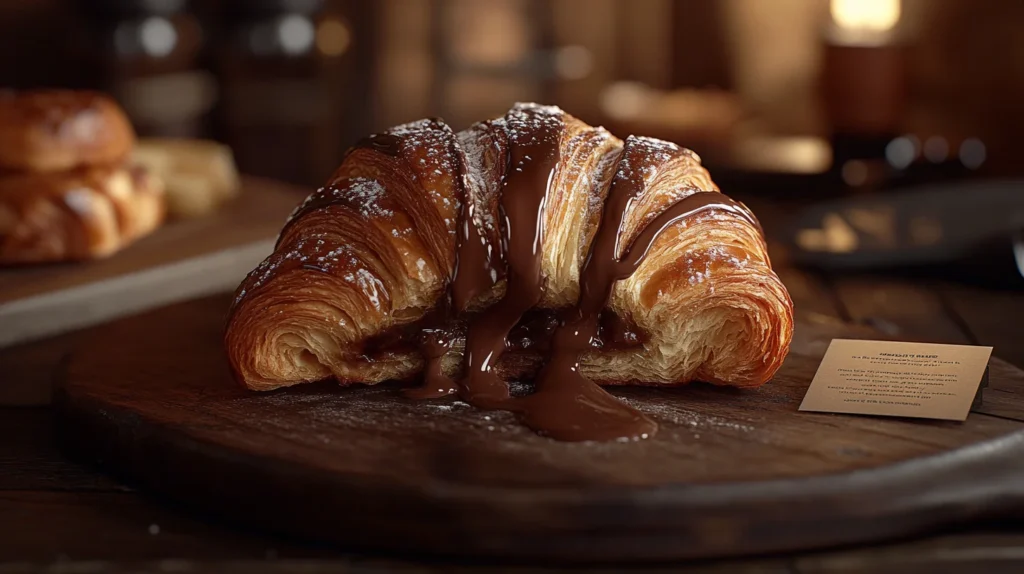
There’s no denying that a Chocolate Croissant Breakfast leans toward indulgence. But that doesn’t mean it can’t fit into a balanced lifestyle—especially when enjoyed in moderation or with smarter tweaks. Let’s explore what’s really inside this beloved pastry and how health-conscious eaters can still enjoy it.
What’s in a Chocolate Croissant Breakfast?
A traditional Chocolate Croissant Breakfast is made from a laminated dough consisting of flour, butter, sugar, salt, yeast, and milk. The lamination process—rolling and folding the dough with layers of butter—creates its iconic flakiness. Inside, you’ll usually find one or two batons of dark chocolate tucked between folds before baking.
Here’s a general breakdown of the nutrition in a standard-sized Chocolate Croissant Breakfast (approx. 90–100g):
- Calories: 350–420 kcal
- Total Fat: 20–25g
- Saturated Fat: 12–15g
- Carbohydrates: 35–40g
- Sugars: 12–18g
- Protein: 5–7g
- Fiber: 1–2g
This shows that a Chocolate Croissant Breakfast is high in fat and carbs, with a moderate amount of sugar and protein. It’s not exactly a power-packed protein breakfast or low-carb meal—but it can definitely deliver a quick energy boost and satisfy sweet cravings.
Is It Healthy Chocolate Croissant Breakfast ?

Calling it a “health food” might be a stretch, but Chocolate Croissant Breakfast do offer some benefits:
- Quick source of energy – great for mornings on the go.
- Mood enhancer – thanks to both the chocolate and carbs, which stimulate serotonin.
- Portion-controlled indulgence – one pastry is usually enough to satisfy.
However, they’re best enjoyed occasionally rather than daily, especially if you’re watching your sugar intake, cholesterol, or overall calorie consumption. Many commercial croissants may also contain preservatives or lower-quality fats, so always check the label if you’re buying packaged ones.
But the good news? If you’re craving a chocolate croissant more often, there are healthier ways to enjoy them.
Healthier Variants
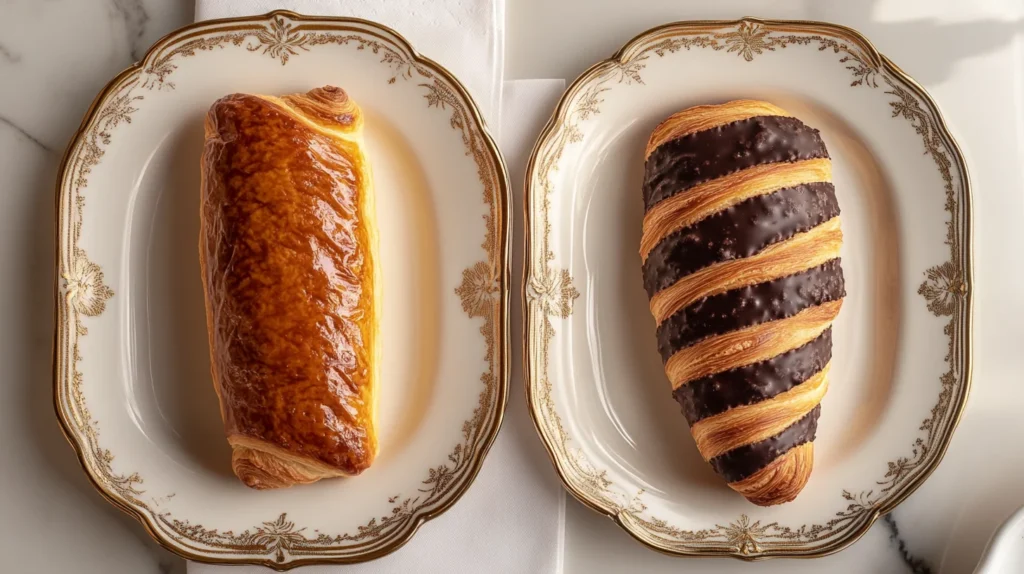
1. Whole Wheat or Spelt Croissants
Some artisan bakeries and home recipes use whole grain flours for added fiber and nutrition. These versions are more filling and have a lower glycemic index, making them better for blood sugar levels.
2. Vegan Chocolate Croissants
Skip the dairy and eggs by opting for plant-based versions made with vegan butter and dairy-free chocolate. You’ll reduce saturated fats and often lower the calorie count too.
3. Gluten-Free Options
For those with gluten sensitivities or celiac disease, there are now gluten-free croissant recipes and brands made with rice flour, tapioca, or almond flour blends. While texture can differ, the satisfaction is still there.
4. Mini Croissants
Smaller portion, same taste. Opting for mini chocolate croissants allows you to enjoy the flavor while consuming fewer calories—perfect for pairing with fruit or yogurt for a more balanced plate.
5. Homemade with Clean Ingredients
The healthiest option might be making your own at home. Using high-quality butter, dark chocolate with at least 70% cacao, and controlling the amount of sugar allows for a much cleaner pastry.
A chocolate croissant doesn’t have to be an all-or-nothing treat. With smarter choices, portion control, and balance, it can be part of a healthy breakfast strategy—especially when paired with fruit, protein, and hydration.
Homemade vs Bakery Chocolate Croissants

When it comes to indulging in a chocolate croissant breakfast, there are two main roads you can take: grab one from your favorite local bakery or try your hand at making them at home. Each has its pros and unique experiences. Whether you love the smell of warm pastries from the oven or the convenience of a grab-and-go treat, this section will guide you through the delicious debate.
Store-Bought Convenience
Let’s face it—not everyone has the time or tools to laminate dough at home. And that’s okay! Many bakeries, cafés, and grocery stores offer excellent chocolate croissants that are ready to enjoy with little to no effort.
Local Artisan Bakeries
If you’re looking for an authentic experience, local French-style bakeries are your best bet. These croissants are often handmade daily, using real butter and premium chocolate. The texture is lighter, the flavor more complex, and the aroma? Absolutely irresistible.
- Look for terms like “all-butter croissant”, “artisan-made”, or “pain au chocolat”.
- If the croissant feels soft and lacks a golden crust, it might be overly processed.
- A true bakery croissant will have visible flaky layers and a slightly crisp exterior.
Grocery Store Options
For convenience, frozen and pre-packaged chocolate croissants can do the job—especially brands like Trader Joe’s, Whole Foods 365, La Boulangerie, or Pillsbury. These come either fully baked or ready to rise and bake at home.
- Pros: long shelf life, lower cost, easy to store and reheat.
- Cons: may contain preservatives, artificial flavors, and lower-quality fats.
If you choose the grocery route, try to go for frozen unbaked croissants. These offer a more fresh-baked experience at home and often puff up beautifully in the oven.
DIY Baking at Home
For those with a love of baking or a desire to experiment in the kitchen, making chocolate croissants from scratch is a rewarding experience. It’s not quick—but it’s incredibly satisfying.
What You’ll Need
- Ingredients: Flour, butter (European-style preferred), milk, sugar, yeast, salt, dark chocolate sticks or bars.
- Tools: Rolling pin, pastry brush, ruler, parchment paper, baking sheet, and patience!
Key Steps in the Process
- Make the dough (détrempe) and let it rest.
- Add the butter block (beurrage) and begin the lamination process—folding and rolling the dough at least three times.
- Cut into rectangles, place chocolate batons, and roll tightly.
- Proof the dough to let it rise and puff up.
- Brush with egg wash and bake until golden brown.
- Enjoy fresh, or freeze for future breakfasts!
Tips for Success
- Use cold butter to prevent melting during lamination.
- Don’t over-handle the dough—it can cause the butter layers to blend instead of separate.
- Let the croissants proof fully for that airy texture.
- Use high-quality dark chocolate with at least 60–70% cacao for deeper flavor.
While homemade chocolate croissants take time—often 12 to 24 hours from start to finish—they offer maximum freshness, full control over ingredients, and that unbeatable “I made this!” pride.
Which One Wins?
- For convenience and consistency: Go with your favorite bakery or trusted store brand.
- For freshness, creativity, and ingredient control: Bake them at home.
- For the best of both worlds: Try frozen unbaked options that let you finish them fresh in your own oven.
The real winner? You, whenever there’s a warm chocolate croissant on your breakfast plate.
Store-bought versions offer convenience, but making your own lets you control ingredients and flavor. For baking inspiration or dessert ideas, try recipes like heart-shaped cakes or mango panna cotta as weekend projects.
Frequently Asked Questions
What to put on croissants for breakfast?
Croissants are wonderfully versatile and pair well with both sweet and savory toppings. For a breakfast twist, consider spreading butter and jam, honey, or Nutella on them. If you prefer savory options, fill them with scrambled eggs, cheese, ham, or avocado. For a complete breakfast, serve alongside yogurt, fruit, or a smoothie to balance the meal.
Is it OK to have a croissant for breakfast?
Yes, it’s perfectly fine to have a croissant for breakfast—especially when enjoyed in moderation. While traditional croissants are high in butter, fat, and carbohydrates, they offer a quick source of energy and pair well with nutrient-dense sides like fruit or yogurt. Choosing whole wheat or smaller croissants can make your breakfast more balanced.
What is a croissant with chocolate called?
A croissant filled with chocolate is commonly known as pain au chocolat in France. While often called a chocolate croissant in English-speaking countries, the traditional pain au chocolat is typically rectangular, not crescent-shaped, and contains one or two batons of dark chocolate inside.
How do you jazz up store-bought croissants?
To make store-bought croissants more exciting, you can warm them in the oven for a fresh-baked feel, then top them with powdered sugar, chocolate drizzle, or sliced fruits. You can also slice and stuff them with scrambled eggs and cheese for a savory option or banana and almond butter for a sweet treat. A quick egg wash and 5 minutes in the oven can also revive their crispiness.
What can I fill croissants with?
Croissants can be filled with a variety of delicious ingredients. For sweet fillings, try pastry cream, chocolate, almond paste, or fruit preserves. For savory fillings, use ham and cheese, spinach and feta, scrambled eggs, or smoked salmon with cream cheese. The flaky dough complements both types of fillings beautifully.
Do croissants need to cool before eating?
Croissants are best enjoyed slightly warm but not too hot. After baking, let them cool for 5–10 minutes so the steam settles and the texture firms up slightly. Eating them too soon can cause the layers to collapse or feel doughy, while waiting too long may cause them to lose that delightful crisp.
Conclusion
A Chocolate Croissant Breakfast is more than just a morning indulgence—it’s a celebration of flavor, culture, and comfort. From its rich European history to its modern-day presence in bakeries around the globe, this flaky pastry has earned its place on breakfast tables everywhere.
Whether you’re savoring one at a Parisian café, baking it from scratch, or warming up a frozen treat at home, the chocolate croissant delivers a dose of joy with every bite. Its perfect blend of crisp layers and smooth chocolate brings elegance to the everyday.
So next time you crave something warm, flaky, and chocolatey, you’ll know exactly why the chocolate croissant breakfast is a ritual worth repeating.👨🍳🥐🍫❤️
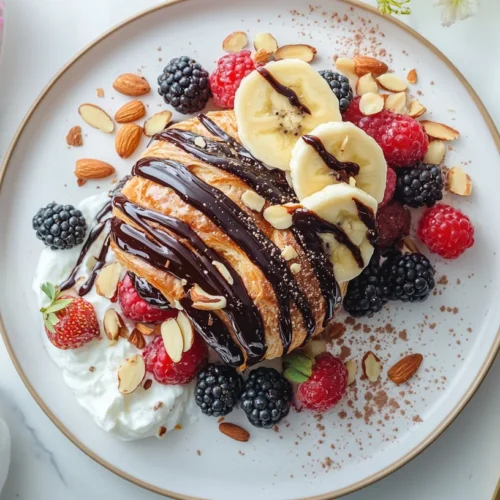
🍽️ Chocolate Croissant Breakfast
Equipment
- Baking sheet
- Parchment paper
- Pastry brush
- Rolling pin (for homemade)
- Oven or toaster oven
- Wire rack for cooling
Ingredients
- For homemade chocolate croissants – 6 servings
- 2 ¼ cups 280g all-purpose flour
- 2 tablespoons sugar
- 1 teaspoon salt
- 1 packet 2 ¼ tsp active dry yeast
- ¾ cup warm milk not hot
- 1 cup 225g unsalted European butter, cold
- 6 –12 batons of dark chocolate 60–70% cacao
- 1 egg for egg wash
Instructions
- Prepare the Dough (Day 1):
- Mix flour, sugar, salt, and yeast in a bowl. Gradually add warm milk to form a dough.
- Knead for 5–7 minutes until smooth. Cover and chill for 30 minutes.
- Laminate the Dough:
- Roll dough into a rectangle. Add cold butter slab to the center and fold the dough over it.
- Perform 3 turns (roll, fold, chill between turns) to create flaky layers.
- Shape the Croissants (Day 2):
- Roll out dough and cut into rectangles. Add 1–2 chocolate batons to each, then roll tightly.
- Place on a parchment-lined baking sheet. Let proof for 1.5 to 2 hours until puffed.
- Bake:
- Preheat oven to 375°F (190°C). Brush croissants with egg wash.
- Bake for 18–22 minutes or until golden brown. Cool on a wire rack.
- Serve Warm:
- Enjoy immediately, or freeze for later and reheat when ready to eat.
